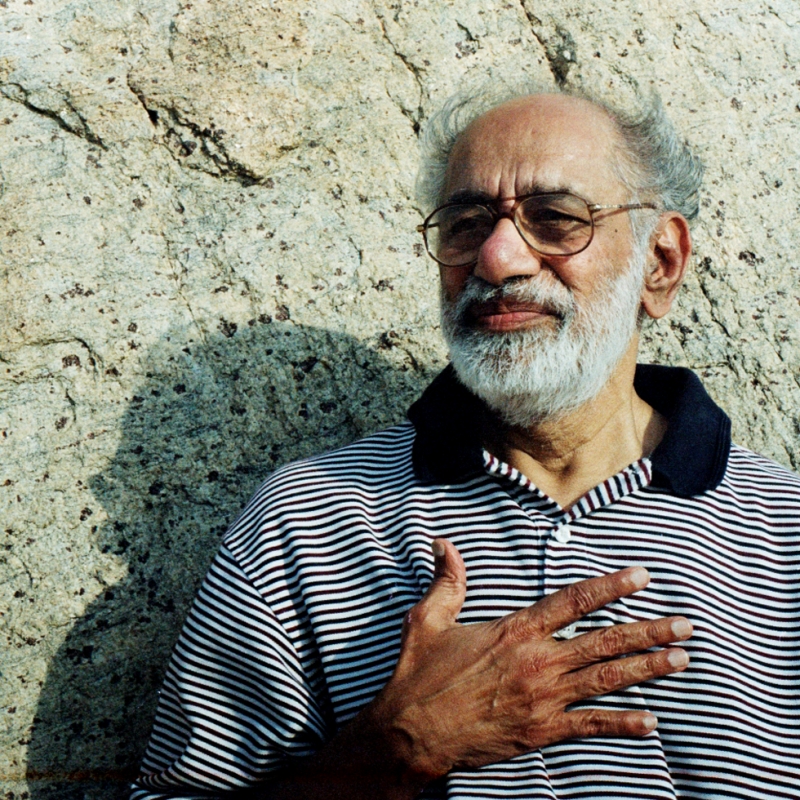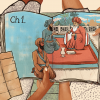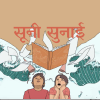It is not easy to homogenise the innumerable women characters in Sundara Ramaswamy’s short stories. However, when we take a few female characters from his novels, we can spot some similarities between them. Characters such as Ratnabai (from ‘Ratnabaiyin Aangilam’), teachers (from ‘Engal Kadhai’), the woman (from ‘Melpaarvai’) and Mariya (from ‘Mariya Dhaamuvukku Ezhudhiya Kadidham’) have all been significant in some way or the other. This paper looks at their characterization and through it the fictional women in Su.Ra’s creations.
Short Stories
Ratnabai is very different from Su.Ra’s other women characters. Her prowess in English, her self-confidence and her ability to often float in a virtual, illusory world make her a unique character. Ratnabai’s personality, which doesn’t lose its flair and majesty even in the face of defeat, has several intricate layers to it which cannot be unravelled by simple psychoanalytical methods. Her self-consciousness and her unique taste towards life and its finer aspects are crucial to her personality. Her outstanding command over English and creative imagination are juxtaposed with her life which seems to be ill-fated. This contradiction makes her character interesting and makes us ponder upon the status of women in our society.
The two teachers in ‘Engal Kadhai’ are exemplary. Their knowledge and broad outlook, beside the strong bond of friendship they share, make them ideal teachers. However, an undercurrent of jealousy between them eclipses the brightness of their personalities. The nuance that despite their great qualities, they are humans when it comes to certain intricate things, is subtly revealed in this story. It is the greatness of the characterization of these two women that keeps the reader interested in them despite the reduction of their aura.
The female teacher, the central character of ‘Pillai Keduththaalvilai’, is charming and highly talented. However, she is charged with a grave criminal act for which she faces social boycott. She is denied an opportunity to present her case and is destined to lead her life with the burden of the crime. Despite the boycott, she goes on about her life in a dignified manner. In many ways, she is representative of the women in the society who are punished without being heard. In this way, Ramaswamy’s characters make the readers come to face with the oppressive societal structure and the politics of silence that acts as resistance.
Unlike the other stories discussed, in ‘Melpaarvai’ we don’t have much information about the female protagonist who is likened to a hugely popular political leader. We don’t know much about her personal life. This girl, who enters the public arena, is a natural leader of her workspace. The story and the character effortlessly convey the power of a woman. In the process, it also helps us understand the strong women we come across in our lives.
Mariya from ‘Mariya Dhaamuvukku Ezhudhiya Kadidham’ can be referred to as the most impactful of Su.Ra’s characters from his short stories. Maria’s story, which movingly describes her affection for humans as well as animals, is a study of the person’s thought process. Mariya’s character teaches us the fine art of impacting people’s lives without making a show of it. However, Su.Ra, deeply aware of the vulnerabilities and fragilities inherent in us, also shows us that even the most morally superior are prone to emotional anxieties and imbalances.
So far, as we have read, Su.Ra’s women characters are able to stand their ground holding on to their ideals, despite their circumstances. The negative tendencies, as human beings are wont to possess, exist but do not form the crux of their being. They go about their lives; they believe in doing without making a spectacle out of the deeds. These traits posit them in stark contrast with the men who are in constant struggle with their existence and identities.
These are the women in Su.Ra’s short stories. Though the women in his novels possess similar traits, we do not see as many and as much variety in emotions as we do in the shorter form of narrative.
Novels
In the first two novels of Su.Ra, women characters were neither ample in number nor did they have as much significance. Almost as if to compensate for this, in his third novel Kuzhanthaigal Pengal Aangal (Children, Women, Men), women are given prominence.
In Kuzhanthaigal Pengal Aangal, the character SRS’s wife Lakshmi is in a difficult phase of life. She lives with the dual burden of chronic illness and the guilt of not being able to perform the duties expected of a wife in a conventional marital setup. She is a keen observer capable of empathy, evident from the way she converses with and guides her sister who is about to start a new life. She is fond of the children of her relatives. It is this kindness and benevolence of hers that also hold her back from spelling out her expectations to her husband. Lakshmi understands the complex emotions of the world we inhabit, which is why even though she can sense her husband’s attraction towards their young domestic help, Anandam, she decides to keep it to herself.
While she is aware of her disability and accepts illness as a constant, at the same time, perhaps because of that understanding, she is also always willing to help others in times of need. An adept communicator, she is shown as someone who is able to speak her mind while being conscious of never hurting another. Lakshmi’s balanced and practical approach in life is visible in the fact that while she doesn’t always interfere with her husband’s behaviour towards their child, when there’s an absolute need, she doesn’t hesitate to step in.
Indian tradition has burdened women with the huge responsibility of protecting and preserving all family and caste-based restrictions. The women heads of the families are at once the protectors and the victims. They are expected to ensure that the caste-based restrictions are strictly practised within the family. Matriarchs of the family cannot escape this responsibility. They are answerable to the violations of the younger generations. It has been ingrained in their minds that failing in this responsibility is a violation of family traditions. It is this burden which makes Lakshmi ignore her aide Anandam’s justified passion as well as her sister Valli’s natural instincts even though she clearly understands their situations.
Anandam’s struggle in the novel is that she is a widow, and although she is in love with a freedom fighter, Chellapa, societal restrictions don’t allow widow remarriage. However, Anandam, aided by her love, is able to overcome the hindrance; Valli, on the other hand, fails to be one with her lover Sridharan, son of a friend of SRS and from a caste different from her own. Unlike Anandam’s position in the social hierarchy, Valli is shown as a person who has grown up in a family that is keen on her getting educated, looks after her and wants her to lead a modern life. However, as soon as they are faced with the possibility of her going ‘too far’ they don’t waste time in pulling the brakes.
Lakshmi is well aware that there is no justification in spoiling the life of Anandam, who is also much younger than her. She realises that it is only natural and justifiable that Valli falls for Sridharan. Reading Lakshmi’s character, one can sense that deep down she is capable of empathising with the two women; however, a prisoner as well as a guard of the hackneyed social ideals, she can’t approve of their deviances. In a sense, Lakshmi stands in contrast to her husband, SRS, who despite coming from the same tradition exercises his modern outlook to go beyond the barriers of caste and religion. Well-read with a capacity for debates and clarity of thought, his progressiveness, however, is futile in the face of his wife’s parochial beliefs. When the dictate of the tradition comes through his wife, he can only step aside after expressing his opinion. The fact remains that Lakshmi is bogged down by barriers she can’t fathom and, thus, can’t express. The contradiction between her personal feelings and her actions dictated by social mores complicates her character and her agency.
Women in this novel are prisoners of their own situations, and some of them try to navigate their limited spaces. These characters—placed in the late 1940s—provide a glimpse into a society undergoing transformation; by delving into the lives of Indian families, their adherence to traditions that have their own strengths and complications.
Conclusion
When viewed in totality, it dawns upon us that Ramaswamy’s women are not feminists; they also do not possess enough political awareness to turn into revolutionaries. However, in their daily ordinariness, they are self-conscious. They are calm. They are not ready to be cowed down by others. They are no harbingers of change. They are fully aware of their standing in the society, and, thus, the limitations its structure imposes.
Women in Ramaswamy’s fictions are of many varieties: those seeking change, those who take things in their stride and confine themselves to just swim with the tide, those who control their situation, those who are controlled by perennial weaknesses of human beings, and those who lead dreamy lives. Most of them, however, manage to be at peace with themselves irrespective of the situation. It is this peace, and the strength derived from it, that helps them keep their lives together, a common thread that binds all the women characters in Ramaswamy’s novels and stories.
Translated from the Tamil original by Suprabala and D.I. Aravindan











